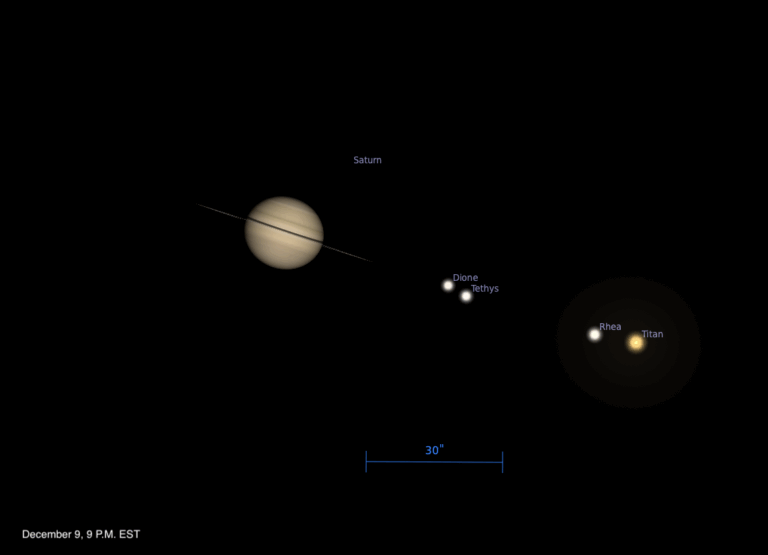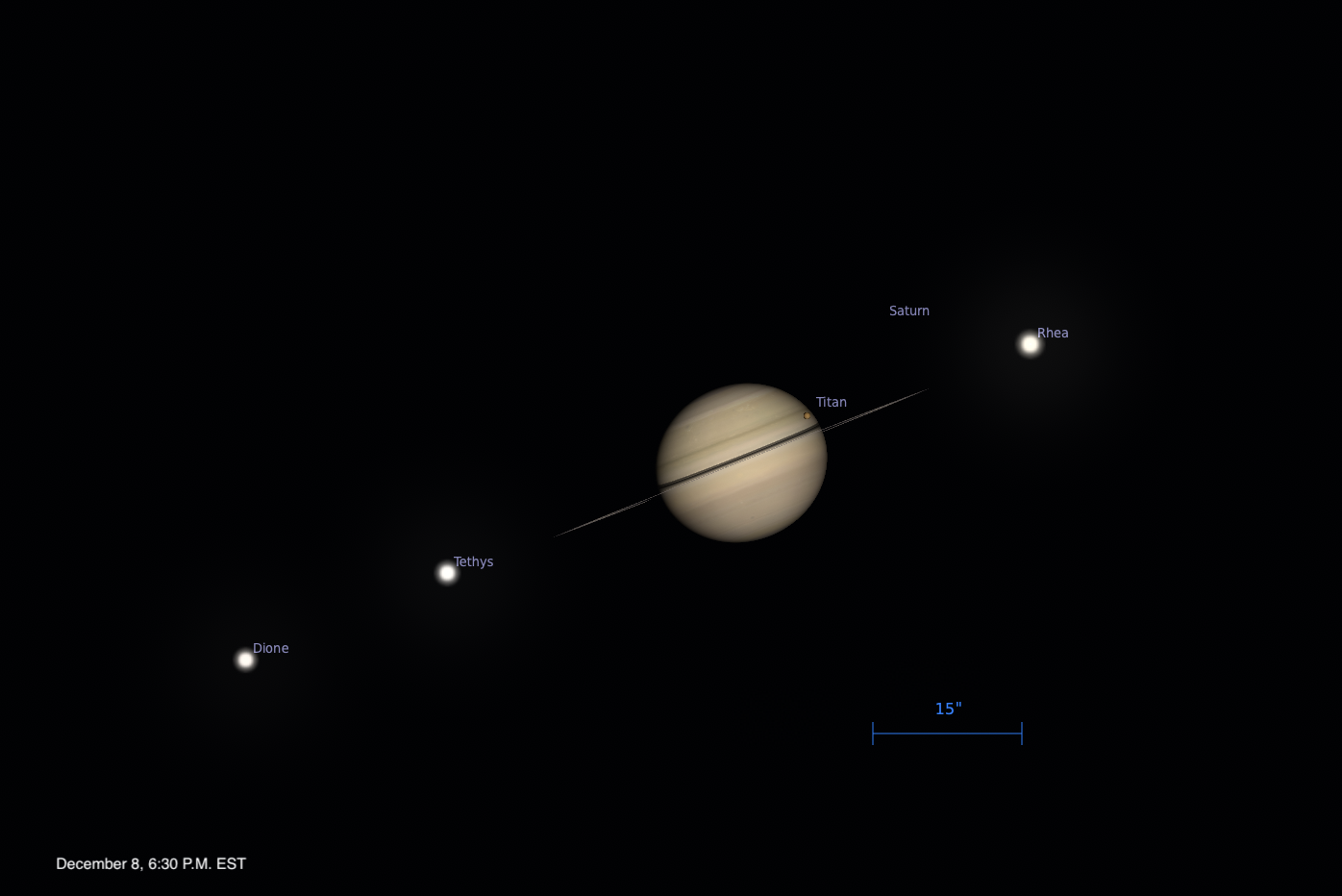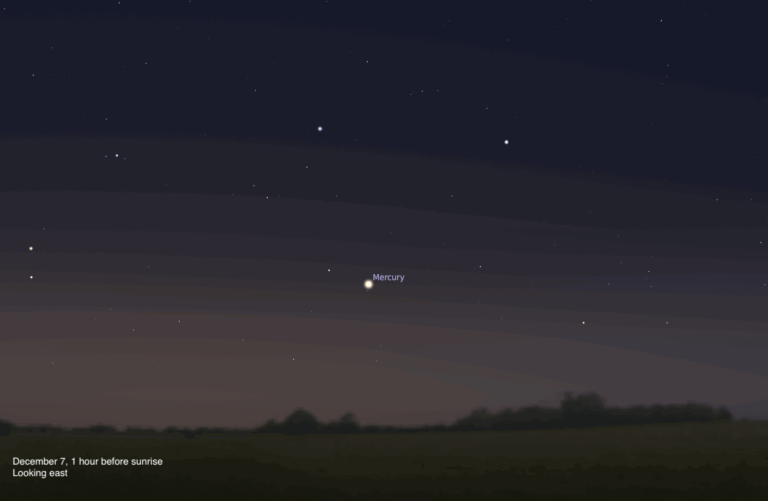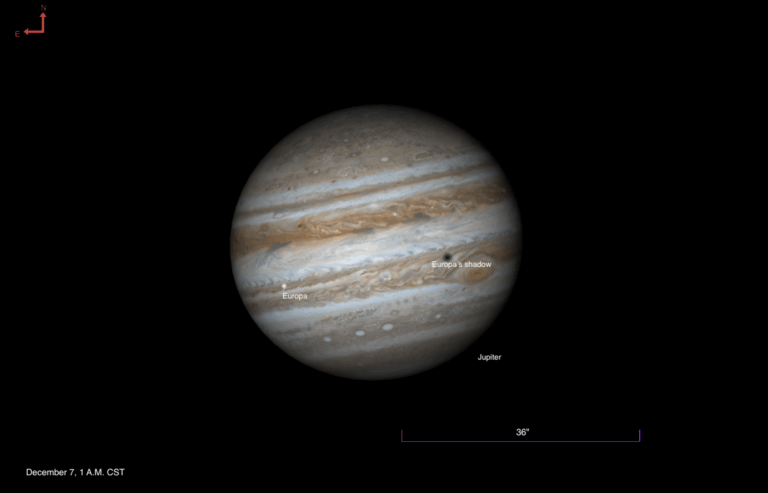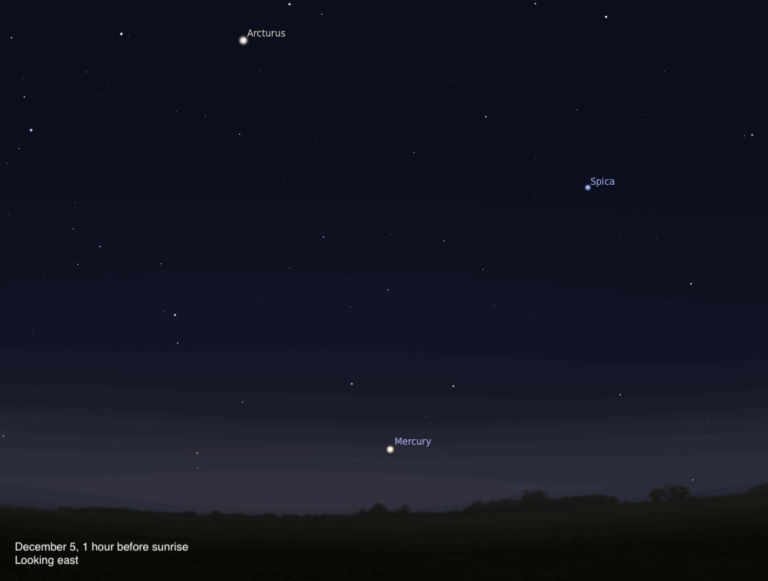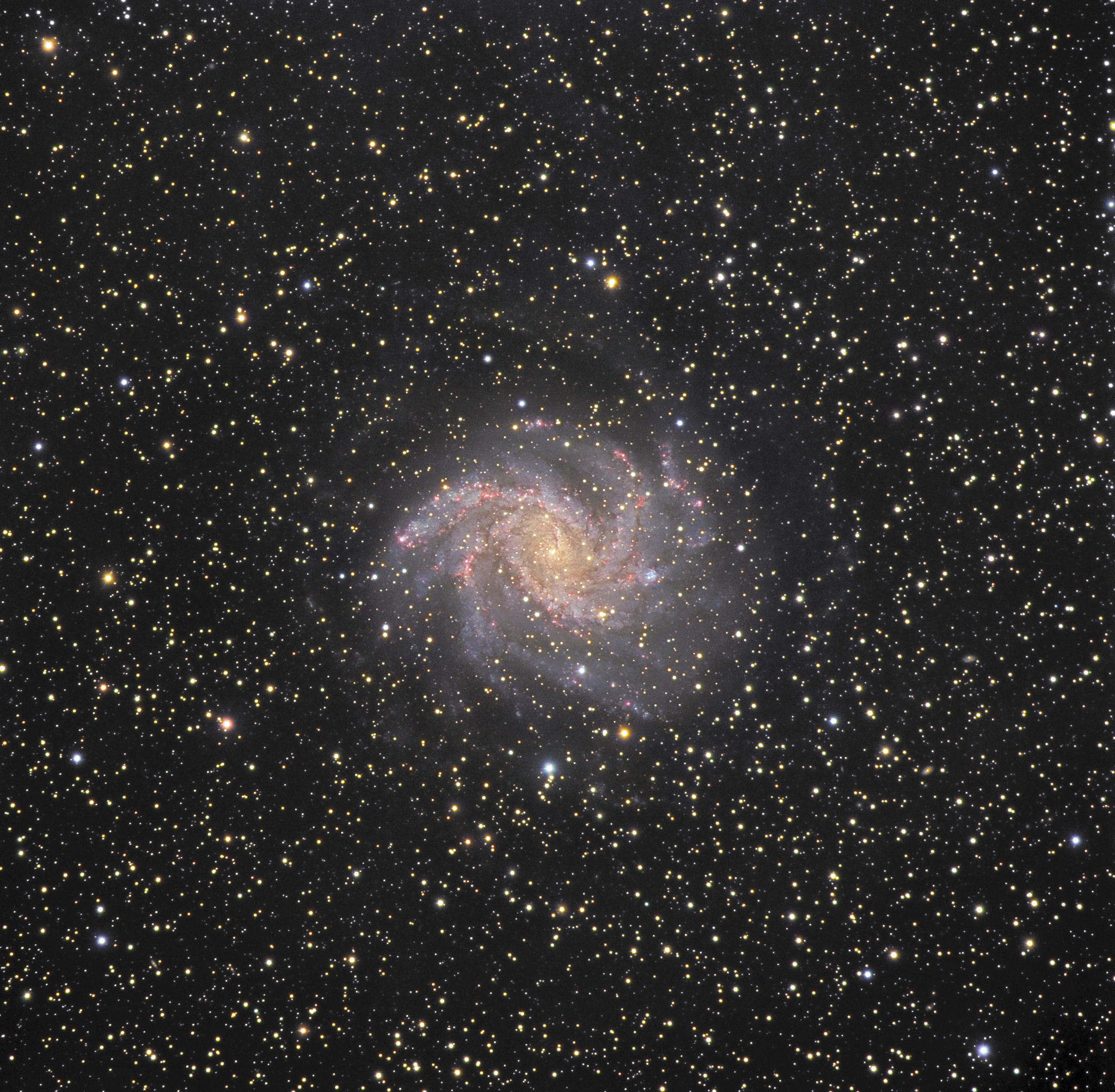
Credit: Dietmar Hager
Key Takeaways:
- Despite its integrated magnitude of 9.6, spiral galaxy NGC 6946 exhibits low surface brightness due to its apparent angular extent and position near the Galactic plane, necessitating apertures of at least 8 inches for detailed observation.
- Discovered by Sir William Herschel in 1798, NGC 6946 is colloquially termed the "Fireworks Galaxy" due to its anomalously high frequency of supernova events.
- This phenomenon is evidenced by the observation of ten supernovae within the last century, including a particularly luminous event in 2017 that reached magnitude 12.8.
- Situated at the confluence of the Cepheus and Cygnus constellations, NGC 6946 is observable as a deep-sky object, with increasingly detailed structural features, such as its bright core and multiple spiral arms, becoming apparent with progressively larger telescope apertures.
How can a celestial object be bright and faint at the same time? The answer hinges on its surface brightness. In the case of spiral galaxy NGC 6946, its overall brightness, magnitude 9.6, is high for a galaxy. Unfortunately, that light spreads over an area 1/20 of 1° across. For comparison, that area is one-quarter of the area covered by the Full Moon.
Another hindrance to NGC 6946’s visibility is its location near the Milky Way’s plane in Cepheus and Cygnus. So, the overall impression of NGC 6946, unless you’re using at least an 8-inch telescope, is of a faint object.
A fitting name
Sir William Herschel discovered NGC 6946 on September 9, 1798. But its common name, the Fireworks Galaxy, has only recently been bestowed on it. Why? For some unknown reason, this galaxy is a hotbed of supernova activity.
In the last century, ten supernovae have appeared, in 1917, 1939, 1948, 1968, 1969, 1980, 2002, 2004, 2008, and 2017. The most recent was the brightest, reaching magnitude 12.8 on September 30.
Find it and observe it
As for its location, the Fireworks Galaxy is one of the few deep-sky objects that lies on the border of two constellations: Cepheus the King and Cygnus the Swan. To find NGC 6946, look 2.1° southwest of the magnitude 3.4 star Eta Cephei.
Now small telescopes will let you spot the galaxy, but you won’t see much detail through apertures less than 8 inches. When you do observe it, note that the galaxy’s core appears bright and spans roughly 10 percent of its diameter. Two spiral arms are visible through an 11-inch scope, and you’ll see four through a 16-inch or larger instrument.
And who knows? Based on its explosive history, you might see a supernova!


